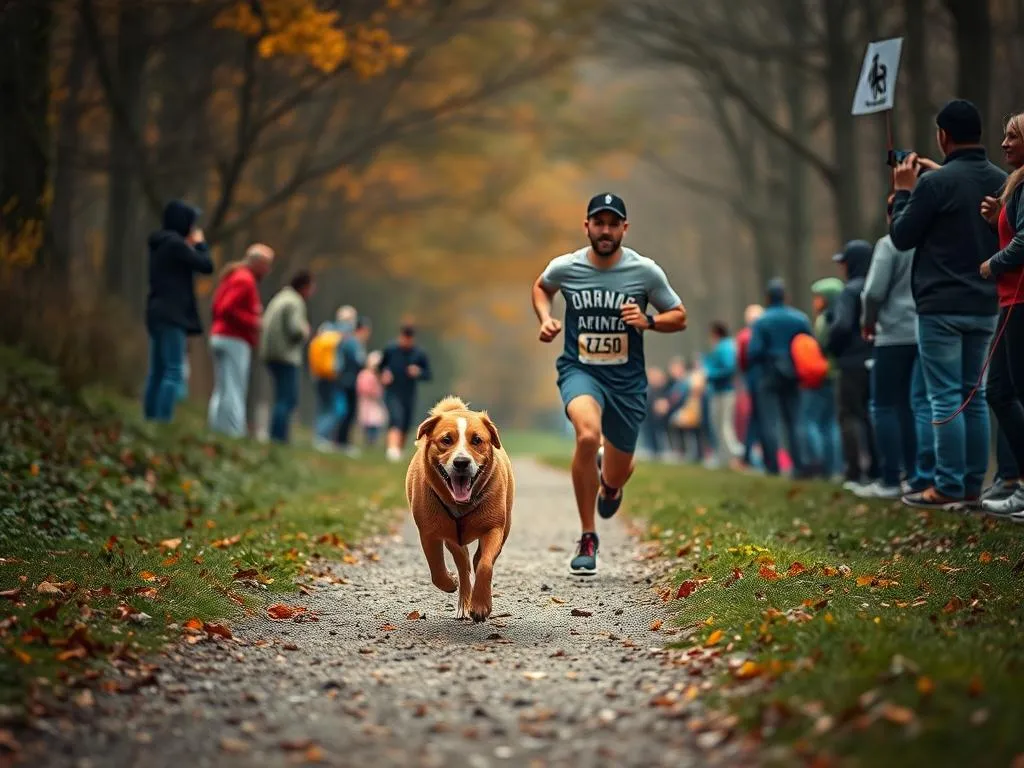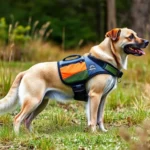
Introduction
Running with dogs has become increasingly popular among pet owners, not just as a form of exercise, but also as a way to bond with their furry companions. The benefits of running with dogs are manifold; it promotes physical health for both the owner and the dog, enhances companionship, and contributes to mental well-being. This article aims to guide you through the process of successfully preparing for and completing a 5K run with your dog.
Preparing for the 5K
Assessing Your Dog’s Fitness Level
Before you embark on the journey of running a 5K with dogs, it is crucial to assess your dog’s fitness level. Just like humans, dogs have varying levels of health and conditioning. Look for signs of a healthy dog ready for running, such as their overall energy, weight, and enthusiasm for exercise. If your dog is older, has a pre-existing medical condition, or is overweight, it may be wise to consult with a veterinarian before starting any running regimen.
Choosing the Right Dog Breed
Not all dogs are created equal when it comes to running. Certain breeds are naturally better suited for the activity than others. Breeds like Labrador Retrievers, Boxers, and Border Collies tend to have higher energy levels and stamina, making them great running companions. Smaller or less active breeds may struggle to keep pace. If you own a mixed breed, consider its individual temperament and energy levels. Always remember to respect your dog’s limits and avoid pushing them too hard.
Gear and Equipment for Running with Dogs
The right gear is essential for a successful run. Invest in a good-quality leash, preferably a hands-free leash that allows you to maintain control while keeping your hands free. A well-fitted dog harness is preferable to a collar for running; harnesses distribute pressure evenly across the dog’s body and reduce the risk of injury. Don’t forget to wear suitable footwear for yourself as well, as comfort and support are key to enjoying your run.
Training for the 5K
Establishing a Training Schedule
Training for a 5K with dogs requires a well-structured plan. A sample 8-week training program can help both you and your dog gradually build endurance. Start with shorter distances, around 1-2 miles, and gradually increase to 3.1 miles. Incorporate rest days to prevent injury and allow recovery. Consistency is key, and a training schedule will keep you on track.
Training Techniques for Running with Dogs
Training techniques are vital to ensure safety and enjoyment during your runs. Leash training is essential to keep your dog at a safe distance while maintaining control. Use commands such as “heel” and “stop” to guide your dog effectively during your runs. Practicing pacing is also important; ensure that both you and your dog can maintain a comfortable speed together.
Building Endurance and Stamina
Building your dog’s endurance and stamina is critical as you prepare for your 5K run. Begin with short runs and gradually increase the intensity and distance. Incorporate interval training, which alternates between fast and slow paces, to boost endurance. Remember to include playtime and rest in your training to keep your dog engaged and happy. Hydration and nutrition are also essential; ensure your dog has access to fresh water and a balanced diet to support their training.
Safety Considerations
Weather and Environmental Factors
Weather plays a significant role in running with dogs. Be cautious when running in hot or cold conditions. In the summer, avoid running on hot pavement, as it can burn your dog’s paws. Look out for signs of overheating, such as excessive panting, drooling, or lethargy. In colder weather, consider protective gear like dog booties or jackets for small or short-haired breeds.
Hydration and Nutrition for Dogs
Hydration is critical for both you and your dog during runs. Always carry water for your dog and take breaks to hydrate, especially on warm days. Before and after runs, provide your dog with nutritious snacks to help fuel their energy levels. High-quality dog treats or small pieces of kibble can work well. Keep an eye out for signs of dehydration, such as dry gums or excessive panting.
First Aid for Dogs
Accidents can happen even during the most well-planned runs, so having basic first aid knowledge is important. Familiarize yourself with common running injuries in dogs, such as paw pad injuries or muscle strains. Keep a first aid kit handy, including bandages, antiseptic wipes, and any necessary medications. Knowing how to treat minor injuries can make a significant difference in your dog’s recovery.
Day of the 5K: What to Expect
Pre-Race Preparation
On the day of the race, preparation is key. Create a checklist of items to bring, including water, snacks, your dog’s ID, and any necessary gear. Warm-up exercises for both you and your dog are vital to prepare your muscles and prevent injuries. Engaging in light stretches and a short walking session can do wonders. Managing pre-race anxiety is also important; stay calm and focused to ensure a positive experience for both you and your dog.
Running the Race
During the race, pacing is crucial. Start at a comfortable pace that you and your dog can sustain for the entire distance. Crowds and other dogs may be present, so stay alert and keep your dog close. Use positive reinforcement—praise and treats—to encourage your dog and keep them motivated throughout the race.
Post-Race Care
After crossing the finish line, it’s essential to cool down properly. Gradually reduce your pace and allow your dog to walk to help their muscles relax. Stretching is equally important for both you and your dog. Celebrate your achievements together, whether it’s a new personal best or simply completing the race. Offer your dog a healthy snack and plenty of water for recovery.
Conclusion
Running a 5K with dogs can be a rewarding experience that strengthens the bond between you and your furry friend. The benefits are numerous—from improved health to enhanced companionship and mental well-being. Share your experiences with fellow dog owners and continue training together for future events. Remember, the journey doesn’t end with the 5K; explore other dog-friendly activities and adventures that will keep both you and your dog active and engaged.









